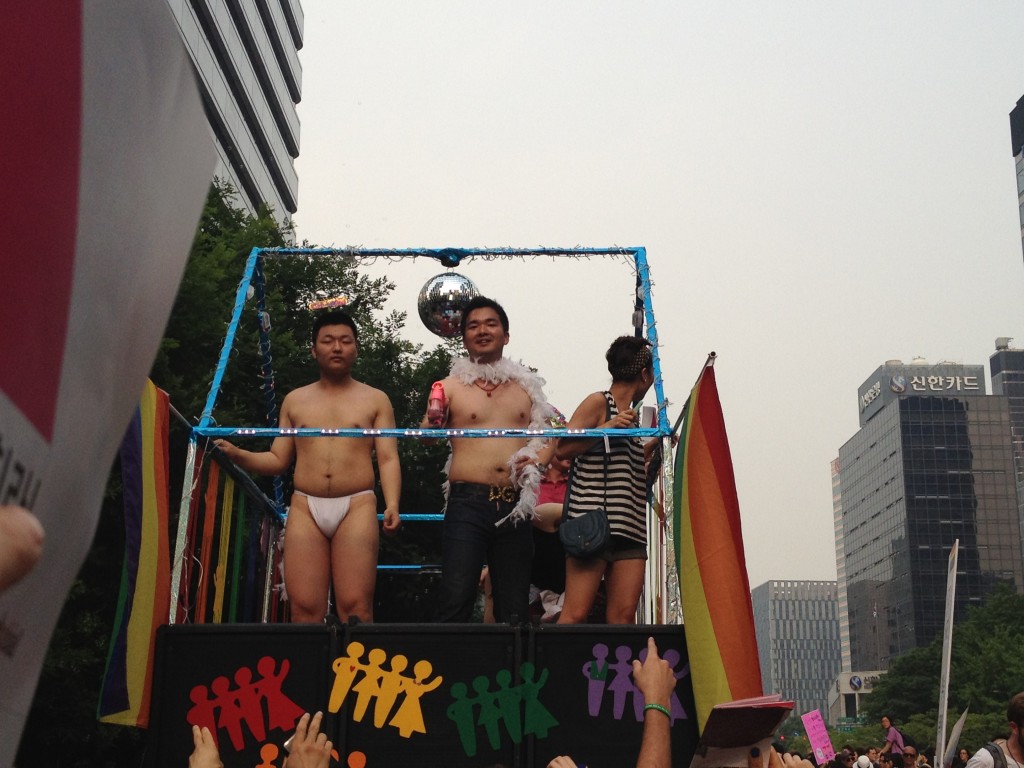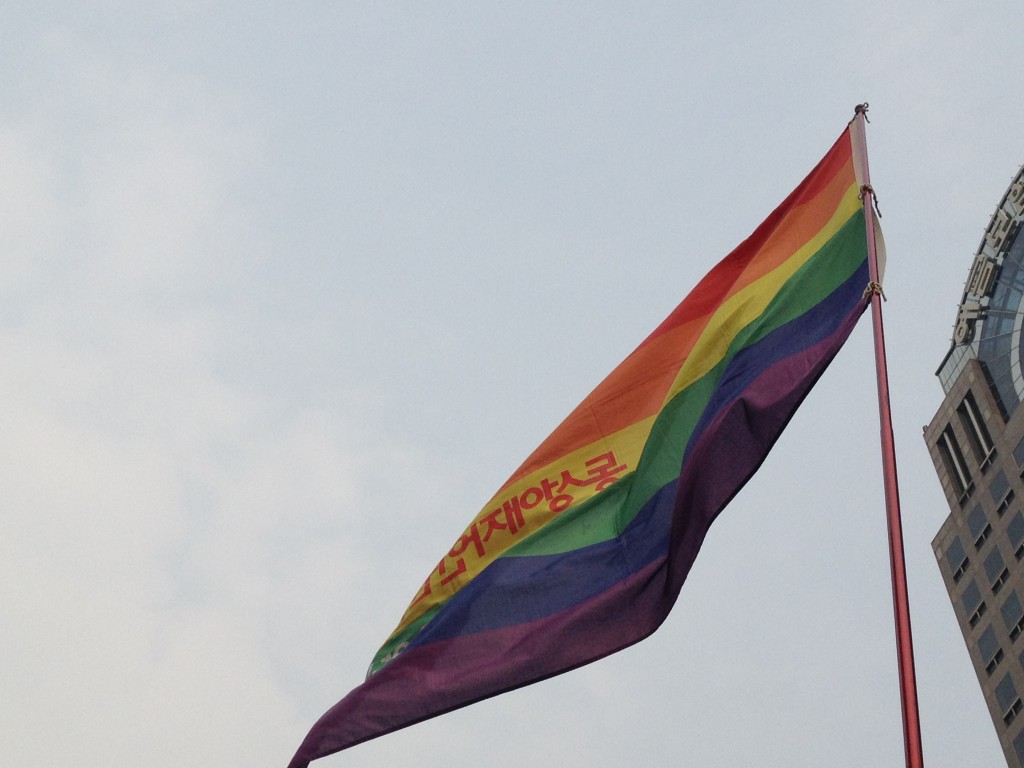This past Saturday was Seoul’s version of Pride, the Korea Queer Culture Festival. June has been declared LGBT Pride Month in the United States by both Presidents Clinton and Obama, and cities across the globe stage parades and events to celebrate the gay community and raise awareness of important causes. While its nothing compared to some of the larger Pride events in the United States, the Queer Culture Festival in Seoul grows in size every year and is impressive for such a normally closeted country.
Korea is far from being a gay friendly country. You will be hard pressed to find any same sex couples walking around openly and most gay Koreans never come out to family or coworkers for fear of the repercussion. When he came out 12 years ago, Korean actor Hong Seok-cheon was fired from his job on a variety show and in 2008 Kim Ji-hoo, a model and actor, killed himself shortly after telling people he was gay because of the backlash. Acceptance of homosexuality is not easy to find in Korea, which made the turnout on Saturday even more impressive.
The festival started around noon near Cheonggyecheon in downtown Seoul. Booths were set up in a park near the stream passing out rainbow pins and other accessories, raising awareness about the gay community in Korea, and painting rainbows on eager faces (so popular that they ran out of red paint before I got there). Later in the afternoon, the event kicked off with a Beyonce tribute. If you’ve never seen a Korean man in drag shaking it to ‘Single Ladies’ then you are missing out. The park was completely filled with excited partygoers and you could feel the energy of the crowd. Though there were a large number of foreigners, the crowd was predominantly Korean and there were even families with small children out and about. The best part of the presentation was when an older Korean woman, dressed fully in traditional Korean work clothes, came out of stage with her gay son. It is nice to see support from parents in any setting, but it was extremely touching to see it in a country so steeped in the tradition of non-acceptance.
After the ceremony it was time for the parade. Well, actually, parade might be a bit of an overstatement for what actually happened. But, nevertheless, it was a good time. A whopping three floats took to the streets for a few blocks around Cheonggyecheon. Music blared (you can leave your guesses in the comments for how many times Lady Gaga’s ‘Born this Way’ was played) and people cheered as men in white thongs danced around on the biggest float and rainbow flags flew through the air.
It might not be San Francisco. It probably even isn’t as big as pride parades in smaller American cities. But it happened. And in Korea that is what is important. It made my heart swell to see the number of people there, of all ages and sexual orientations. I try not to share my thoughts about Korean politics often because an outsider to the culture I don’t really feel it is my place, but love should be a universally accepted ideology and Saturday’s event showed that Korea is making small steps toward a larger acceptance for its gay population.
If you haven’t already, please ‘Like’ Farsickness on Facebook and stay up to date on all my travels and posts! Your support is greatly appreciated.







